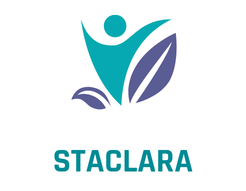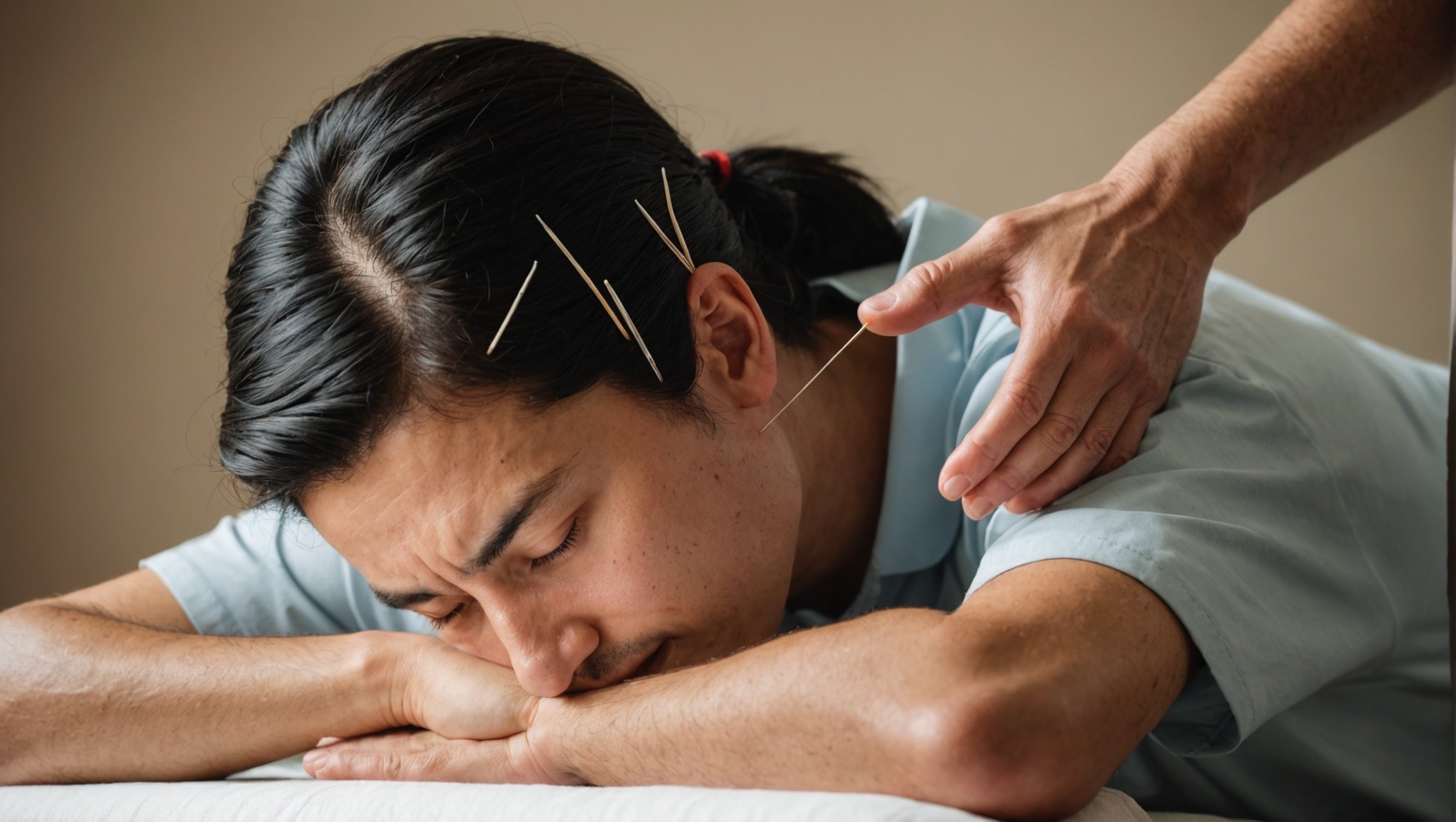Migraine sufferers often seek relief from debilitating pain through various means. Acupuncture, an ancient practice rooted in Traditional Chinese Medicine, has gained attention for its potential to manage migraine frequency effectively. This therapy aims to restore balance and alleviate discomfort by targeting specific points on the body. This exploration delves into the effectiveness of acupuncture as a viable treatment option for adults experiencing recurring migraines, shedding light on its underlying mechanisms and possible benefits. Consider how acupuncture could be the solution you’ve been searching for in your journey towards migraine relief.
Overview of Migraines
Understanding migraines is crucial for effective migraine management. Migraines are more than just severe headaches; they are a neurological condition characterized by intense, debilitating pain. There are several types of migraines, including migraine with aura, where sensory disturbances precede the headache, and migraine without aura, which is more common and lacks these preliminary symptoms.
Also read : Exploring the Impact of Peer Support on Long-Term Smoking Cessation Success in Adults
Migraines affect millions globally, with statistics indicating that approximately 12% of the adult population experiences them. This prevalence highlights the importance of understanding and managing migraine frequency. The impact on daily life is significant, often leading to missed workdays and reduced productivity.
Consider the following statistics:
Also to discover : Exploring the Link: Do Omega-6 Fatty Acids Drive Inflammation in Arthritis Patients?
- 12% of adults suffer from migraines
- 90% of sufferers cannot work or function normally during an attack
- 25% experience four or more migraine days per month
The repercussions of migraines extend beyond physical pain, affecting emotional well-being and social interactions. Effective migraine management involves identifying triggers, using medication, and lifestyle adjustments to reduce migraine frequency. By understanding the nature and impact of migraines, individuals can take proactive steps to manage this condition and improve their quality of life.
Principles of Acupuncture
Exploring the foundations of this ancient practice.
Historical Background and Philosophy
Acupuncture, a key component of traditional Chinese medicine, has been practiced for thousands of years. Rooted in the philosophy of balancing the body's energy, or Qi, acupuncture aims to restore harmony through the stimulation of specific points on the body. These points are believed to correspond to energy pathways known as meridians.
Mechanism of Action
The exact mechanism by which acupuncture alleviates migraines remains a topic of research. However, it is believed that acupuncture may influence the central nervous system by releasing neurotransmitters and endorphins, which help reduce pain perception. This ancient practice is thought to modulate the flow of Qi, thereby promoting healing and alleviating symptoms.
Common Techniques for Migraines
Various acupuncture techniques are employed to treat migraines, each tailored to individual needs. Common methods include:
- Traditional needle insertion at specific meridian points
- Electroacupuncture, which involves electrical stimulation of needles
- Cupping, used in conjunction with acupuncture to enhance effects
Acupuncture provides a holistic approach to migraine management, offering an alternative to conventional treatments. By understanding its principles, individuals can explore acupuncture as a viable option for relief.
Research Findings on Acupuncture and Migraines
Investigating the scientific evidence behind acupuncture's role in migraine treatment.
Summary of Key Research Studies
Recent acupuncture research has provided valuable insights into its effectiveness for migraine treatment. Studies indicate that acupuncture can be as effective as conventional treatments, with fewer side effects. A 2016 randomized controlled trial found that patients receiving acupuncture reported a significant reduction in migraine frequency compared to those receiving standard care.
Comparison with Traditional Migraine Treatments
When comparing acupuncture with traditional migraine treatments such as medication, acupuncture offers a more holistic approach. Unlike pharmaceuticals, acupuncture targets the body's energy balance. This method may reduce dependency on medications, offering a sustainable alternative for long-term management.
Meta-Analysis Results
A comprehensive meta-analysis of various studies on acupuncture for migraine frequency revealed promising outcomes. The analysis concluded that individuals receiving acupuncture experienced fewer migraine days per month. This finding supports the growing body of evidence-based studies advocating for acupuncture as a viable option in migraine management.
- Key Findings:
- Acupuncture reduces migraine frequency
- Comparable effectiveness to conventional treatments
- Fewer side effects than medications
These findings underscore the potential of acupuncture as an effective and complementary approach to managing migraines. By integrating acupuncture into treatment plans, individuals may find relief and improved quality of life.
Statistical Data on Acupuncture's Effectiveness
A closer look at the numbers behind acupuncture's success.
Overview of Statistical Findings
Acupuncture has gained attention for its treatment efficacy in reducing migraine frequency. Recent statistics reveal a promising picture of its effectiveness. Studies show that a significant percentage of patients report a decrease in the number of migraine days. For instance, approximately 50% of patients experience a reduction in migraine frequency by at least half after undergoing acupuncture treatment.
Percentage of Patients Reporting Reduced Migraine Frequency
The impact of acupuncture on migraine sufferers is notable. In clinical trials, about 59% of participants reported fewer migraines after consistent acupuncture sessions. This data underscores the potential of acupuncture as a viable treatment option, particularly for those seeking alternatives to traditional medications.
Long-term Versus Short-term Efficacy
The long-term efficacy of acupuncture is a critical consideration. While some patients experience immediate relief, the benefits of acupuncture often increase with regular treatments. Long-term studies demonstrate that sustained acupuncture sessions can lead to prolonged migraine frequency reduction, offering patients a more durable solution compared to short-term interventions.
- Key Statistics:
- 50% of patients report a 50% reduction in migraines
- 59% experience fewer migraines overall
- Long-term benefits increase with ongoing treatment
This statistical evidence highlights acupuncture's role in effective migraine management.
Expert Insights on Acupuncture for Migraines
Gaining perspectives from seasoned practitioners.
Quotes and Insights from Acupuncture Practitioners
Acupuncture practitioners often emphasize its role in a holistic migraine management approach. Dr. Li Wang, a renowned acupuncturist, states, "Acupuncture provides a personalized therapy that addresses the root causes of migraines, not just the symptoms." This insight highlights the importance of tailoring treatments to individual needs, a key aspect of effective migraine therapy.
The Role of Acupuncture in a Holistic Migraine Management Plan
Incorporating acupuncture into a holistic migraine management plan can significantly enhance its effectiveness. Practitioners advocate for combining acupuncture with lifestyle modifications, such as stress reduction and dietary adjustments. This integrated approach ensures that patients receive comprehensive care, addressing both the physiological and environmental factors contributing to migraines.
Discussion on Personalized Acupuncture Approaches
Personalization is crucial in acupuncture, with practitioners adapting techniques to suit each patient's unique condition. This flexibility allows for targeted migraine therapy, optimizing outcomes. A typical session might involve a combination of traditional needle insertion and electroacupuncture, tailored to the patient's specific migraine triggers and symptoms.
- Key Points:
- Personalized therapy for root causes
- Integrated with lifestyle changes
- Tailored techniques enhance effectiveness
These expert insights underscore acupuncture's potential as a personalized and comprehensive solution for migraine sufferers.
Patient Testimonials and Experiences
Exploring real-life stories and insights.
Compilation of Patient Experiences
Patients have shared numerous stories about their journeys with acupuncture for migraine relief. Many highlight how acupuncture has transformed their lives, providing significant relief from frequent and debilitating headaches. These patient stories often emphasize the holistic benefits, noting improvements in both physical and emotional well-being.
Case Studies Highlighting Success Stories
Several case studies reveal compelling success stories. For instance, one patient reported a dramatic decrease in migraine frequency after a series of acupuncture sessions, going from weekly attacks to just one a month. Another patient highlighted how acupuncture helped manage stress, a major trigger for their migraines. These stories underscore acupuncture's potential in offering sustainable migraine relief.
Common Themes in Patient Feedback
Feedback from patients frequently mentions the effectiveness of acupuncture in reducing migraine symptoms. Common themes include:
- Significant reduction in migraine frequency
- Enhanced sense of relaxation and stress management
- Improved overall quality of life
These acupuncture reviews consistently reflect positive outcomes, with many patients recommending it as a viable alternative to traditional treatments. By sharing these experiences, individuals considering acupuncture can gain valuable insights into its potential benefits for migraine management.
Possible Side Effects of Acupuncture
Exploring the safety and potential risks of acupuncture treatment.
Overview of Potential Side Effects
While acupuncture is generally considered safe, it is not without potential side effects. Common side effects include minor bruising, soreness, or bleeding at the needle insertion points. These effects are typically mild and temporary. However, it is important to be aware of the possibility of more serious complications, such as infections, especially if the needles are not properly sterilized.
Risks Compared to Other Migraine Treatments
When comparing the risks associated with acupuncture to those of traditional migraine treatments, acupuncture generally presents fewer side effects. Conventional medications can lead to dependency or adverse reactions, whereas acupuncture's side effects are often less severe. This makes acupuncture an appealing choice for those seeking a safer alternative.
Recommendations for Ensuring Safe Practices
To minimize treatment risks, it is crucial to ensure that acupuncture is performed by a qualified and licensed practitioner. Recommendations include:
- Verifying the practitioner's credentials
- Ensuring the use of sterile, single-use needles
- Discussing any medical conditions or allergies beforehand
By following these guidelines, individuals can safely explore acupuncture as a viable option for migraine management, while minimizing potential side effects.
Integrating Acupuncture into Migraine Management
Strategies for a comprehensive approach.
Combining Acupuncture with Conventional Treatments
Integrating acupuncture with conventional migraine treatments can enhance overall effectiveness. This holistic treatment approach allows individuals to benefit from both traditional and alternative therapies. For example, patients may continue using prescribed medications while incorporating acupuncture sessions to address underlying issues and reduce dependency on drugs. This integrative approach can lead to a more sustained reduction in migraine frequency and severity.
Importance of Lifestyle Adjustments
Lifestyle changes are crucial when integrating acupuncture into a migraine management plan. Adjustments such as stress reduction, regular exercise, and a balanced diet can complement acupuncture's effects. These changes help maintain energy balance, a key component of the treatment. By adopting healthier habits, individuals can enhance acupuncture's benefits, resulting in a more comprehensive and effective management strategy.
Creating a Comprehensive Migraine Management Plan
A successful migraine management plan combines acupuncture, lifestyle changes, and conventional treatments. Consider the following elements in your plan:
- Regular acupuncture sessions
- Stress management techniques
- Nutritional adjustments
- Consistent exercise routine
This integrative approach ensures a well-rounded treatment plan, addressing both symptoms and root causes. By embracing a holistic strategy, individuals can achieve better migraine control and improved quality of life.
Future Directions in Acupuncture Research
Exploring innovative pathways in acupuncture and migraine treatment.
Areas for Further Research
The field of acupuncture is ripe for further exploration, particularly concerning its role in migraine management. Current studies suggest the need for more comprehensive research to understand the precise mechanisms by which acupuncture alleviates migraine symptoms. Future research could focus on identifying specific acupuncture techniques that effectively target migraine-related pathways.
Emerging Trends in Acupuncture and Pain Management
Emerging trends in acupuncture innovation are shaping the future of pain management. Techniques such as laser acupuncture and acupressure are gaining attention for their potential to enhance treatment efficacy. These innovations may offer less invasive options while maintaining the therapeutic benefits of traditional acupuncture. Researchers are also exploring the integration of digital health technologies to personalize and optimize acupuncture treatments.
Potential Advancements in Acupuncture Techniques
Advancements in acupuncture techniques hold promise for improved migraine treatment. Potential developments include the use of biomarkers to tailor acupuncture sessions to individual patient profiles, enhancing precision and effectiveness. Additionally, combining acupuncture with other complementary therapies could provide a more holistic approach to migraine management.
- Key Areas for Innovation:
- Laser acupuncture
- Integration with digital health
- Biomarker-based personalization
These advancements highlight the potential for acupuncture to evolve into a more precise and effective tool for managing migraines, paving the way for future research and innovation.
Conclusion and Recommendations
Navigating the path to effective migraine management.
Summary of Key Takeaways
Acupuncture offers a promising alternative for migraine management, providing relief with fewer side effects compared to conventional treatments. It is essential to understand acupuncture’s role in reducing migraine frequency and enhancing overall well-being. By integrating it into a comprehensive treatment plan, individuals can achieve significant improvements.
Finding Qualified Practitioners
Selecting a qualified acupuncture practitioner is crucial for safe and effective treatment. Ensure the practitioner is licensed and experienced in treating migraines. Recommendations include:
- Verify credentials and certifications
- Seek referrals from trusted sources
- Discuss treatment goals and expectations
Recommendations for Individuals Considering Acupuncture
For those contemplating acupuncture for migraines, consider the following guidance:
- Assess personal health needs and consult with healthcare providers
- Combine acupuncture with lifestyle changes for optimal results
- Start with a trial period to evaluate effectiveness
Acupuncture can be a valuable component of a holistic migraine management strategy. By following these recommendations, individuals can make informed decisions and explore the potential benefits of this ancient practice. Embracing acupuncture may lead to improved quality of life and sustained migraine relief.











